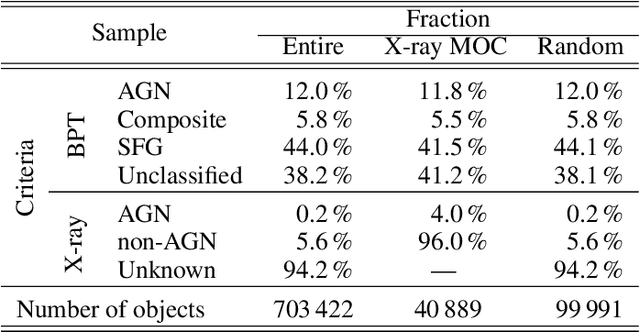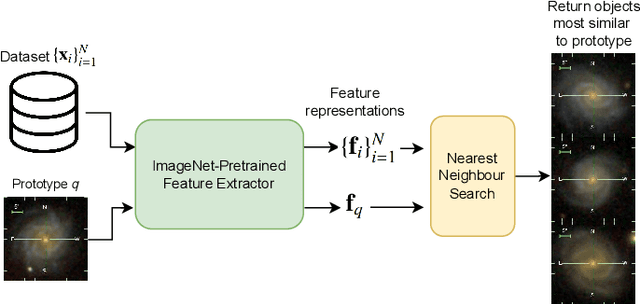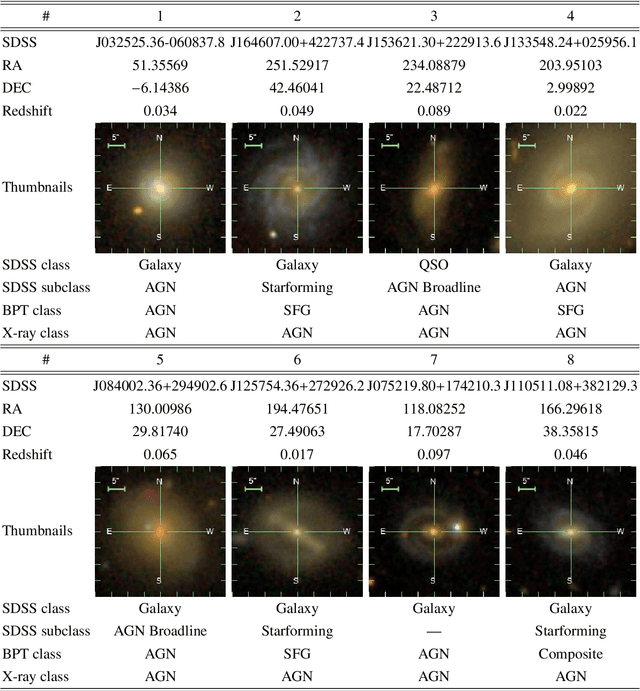Olena Torbaniuk
Galaxy spectroscopy without spectra: Galaxy properties from photometric images with conditional diffusion models
Jun 26, 2024



Abstract:Modern spectroscopic surveys can only target a small fraction of the vast amount of photometrically cataloged sources in wide-field surveys. Here, we report the development of a generative AI method capable of predicting optical galaxy spectra from photometric broad-band images alone. This method draws from the latest advances in diffusion models in combination with contrastive networks. We pass multi-band galaxy images into the architecture to obtain optical spectra. From these, robust values for galaxy properties can be derived with any methods in the spectroscopic toolbox, such as standard population synthesis techniques and Lick indices. When trained and tested on 64x64-pixel images from the Sloan Digital Sky Survey, the global bimodality of star-forming and quiescent galaxies in photometric space is recovered, as well as a mass-metallicity relation of star-forming galaxies. The comparison between the observed and the artificially created spectra shows good agreement in overall metallicity, age, Dn4000, stellar velocity dispersion, and E(B-V) values. Photometric redshift estimates of our generative algorithm can compete with other current, specialized deep-learning techniques. Moreover, this work is the first attempt in the literature to infer velocity dispersion from photometric images. Additionally, we can predict the presence of an active galactic nucleus up to an accuracy of 82%. With our method, scientifically interesting galaxy properties, normally requiring spectroscopic inputs, can be obtained in future data sets from large-scale photometric surveys alone. The spectra prediction via AI can further assist in creating realistic mock catalogs.
ULISSE: A Tool for One-shot Sky Exploration and its Application to Active Galactic Nuclei Detection
Aug 23, 2022



Abstract:Modern sky surveys are producing ever larger amounts of observational data, which makes the application of classical approaches for the classification and analysis of objects challenging and time-consuming. However, this issue may be significantly mitigated by the application of automatic machine and deep learning methods. We propose ULISSE, a new deep learning tool that, starting from a single prototype object, is capable of identifying objects sharing the same morphological and photometric properties, and hence of creating a list of candidate sosia. In this work, we focus on applying our method to the detection of AGN candidates in a Sloan Digital Sky Survey galaxy sample, since the identification and classification of Active Galactic Nuclei (AGN) in the optical band still remains a challenging task in extragalactic astronomy. Intended for the initial exploration of large sky surveys, ULISSE directly uses features extracted from the ImageNet dataset to perform a similarity search. The method is capable of rapidly identifying a list of candidates, starting from only a single image of a given prototype, without the need for any time-consuming neural network training. Our experiments show ULISSE is able to identify AGN candidates based on a combination of host galaxy morphology, color and the presence of a central nuclear source, with a retrieval efficiency ranging from 21% to 65% (including composite sources) depending on the prototype, where the random guess baseline is 12%. We find ULISSE to be most effective in retrieving AGN in early-type host galaxies, as opposed to prototypes with spiral- or late-type properties. Based on the results described in this work, ULISSE can be a promising tool for selecting different types of astrophysical objects in current and future wide-field surveys (e.g. Euclid, LSST etc.) that target millions of sources every single night.
 Add to Chrome
Add to Chrome Add to Firefox
Add to Firefox Add to Edge
Add to Edge